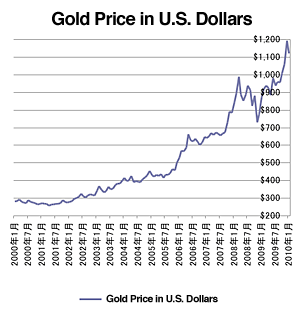Top>Opinion>From the Epicenter of the Financial Crisis: Current Economic Situation in the United States
 Index
Index

Kazunori Suzuki [Profile]
From the Epicenter of the Financial Crisis: Current Economic Situation in the United States
Kazunori Suzuki
Professor of Finance (Corporate Finance and Corporate Valuation), Chuo Graduate School of International Accounting, Chuo University
Recurring global financial crises and their background
I have already spent four months on my sabbatical leave here at Harvard University in the United States, and I get the sense that the U.S. economy is emerging from the 2008 financial crisis and on its way to making a fresh start. Although there is no shortage of macroeconomic concerns regarding prospects for 2010-with the unemployment rate remaining high and consumption still only halfway revived-stock prices have reached a new high and there has been a steady upswing in corporate performance as well.
Triggered by the subprime loan defaults and the subsequent bankruptcy of Lehman Brothers, the global financial crisis was dubbed a Once-In-A-Century Crisis but I think this appellation misses the mark. Quite the contrary, in fact, as highly globalized and complex financial systems have resulted in the very frequent occurrence of global financial crises-as evidenced in just the last decade: in the Asian currency crisis in 1997, the Russian crisis in 1998, the bursting of the Dot-Com Bubble from 2000 to 2001, and the current subprime loan problems and Lehman Shock from 2007 to 2008.
Some say that the effects of this Once-In-A-Century Crisis have been held in check through the cooperation of national governments worldwide in addressing the crisis. This may very well be true, but it seems to me that the more successful such international cooperation is in curbing the immediate impact of the financial crisis, the worse the situation could get. The excessive flow of capital, the principal cause of financial crises, akin to the focus of disease in medical terms, would be maintained unchecked and, in turn, the next money-making opportunity would be sought just as metastasis of the disease. Many economists also argue that the subprime loan crisis in 2007 and 2008 was primarily caused by the prolonged easing of credit that the U.S. maintained in order to mitigate the impact when the Dot-Com Bubble burst. If so, as nations from around the world continue to supply excessive capital under the present international cooperative regime, more drastic fluctuations in asset prices will occur in the near future, greatly increasing the likelihood of another financial crisis.
Signs of the crises displayed on U.S. economic TV channels
I visit the United States regularly every year. During my stay, I am interested in and take note of what kinds of investments are drawing people's attention on TV channels covering the economy and finance. I pay particular attention to the investment related commercials that are aired between programs. Looking back on these commercials over the past ten years as I write this article, I find that remarkably they overlap with the history of the financial crises. Until around 2000, the commercials were primarily for online securities brokers and Internet related companies. The online securities houses competed with each other by offering lower commissions, while the net related firms touted the extent to which they would change traditional business, the so-called new economy theory. After the Dot-Com Bubble burst in 2002, we saw more commercials for real estate investment. I still remember one ad for CD-ROM-based distance learning which ostensibly taught: how to become a millionaire after just a few years by purchasing properties with zero down. I myself wondered how such a method of investment could be possible, but I did not consider it very carefully. I realized several years later that this was actually an instantiation of subprime loans. The properties were to be bought for the purpose of reselling: This was an easy way of making money by acquiring homes with entirely borrowed funds-zero seed money-and reselling them at higher prices to earn margins after repaying the loans. Incidentally, this type of investment was also used in Japan during the economic bubble in the late 1980s.

Gold Price in U.S. Dollars
Gold Price in U.S. Dollars, Monthly
Created by the author based on data from sources such as Bloomberg
As I watch for the kind of commercials airing in the U.S. these days, I find that commercials for investment in gold are most salient, with pitches like: Investment in gold has yielded over 100% returns in recent years. The value of the U.S. dollar is stubbornly declining, so invest in gold in order to protect your assets. Commercials like this are aired several times an hour by more than one investment firm. As shown in the graph below, the dollar-based price of gold has been rising even after the financial crisis to a historically high range. Sharp and unreasonable appreciation in a certain asset price is predicated on people's experience that the immediate crisis has not affected the price, or on stories that convince them that the price will continue rising. In terms of the latter, expectations are being fanned that China and other emerging economies will demand more gold. It seems that the disease of money overflowing throughout the world has discovered the next target for metastasis.
Intrinsic value and actual transaction prices of assets in finance theory
In finance theory, the intrinsic value of an asset is equal to the aggregate present value of the cash flow that is expected to come to the owner in the future as a result of owning the asset. The theory holds that while the market value may differ significantly from the intrinsic value in the short term, the asset price is bound to settle at the level it was supposed to in the long run. (The problem is that it is impossible to predict just how long of a period the long run is.) There are, however, some assets whose value is hard to calculate with such a method, such as art work and commodities like gold. The intrinsic value of such assets is very difficult to assess. In other words, drastic fluctuations in prices may well result from ad-hoc convincing explanations or from the mood of the day.
Today, the global economy has regained stability due to the liquidity supplied and low-interest policies implemented worldwide. This seems, in some respects, to be a situation where preventive medicine has staved off the pain that attends the correction of overproduction and overconsumption as well as the shakeout of unprofitable businesses-pain which would have been felt if the recession actually were of once-in-a-century scale. Above all, the excess money supply-the focus of the disease that is this crisis-remains untouched. I cannot help having concerns that crises caused by drastically fluctuating asset values are very likely to recur in the future-paradoxically enough, precisely because the current crisis is not of once-in-a-century scale.
- Kazunori Suzuki
Professor of Finance (Corporate Finance and Corporate Valuation), Chuo Graduate School of International Accounting, Chuo University - The author graduated with a BA from the Faculty of Law at The University of Tokyo and joined Fuji Bank in 1986. He received an MBA (Master of Business Administration) from INSEAD (European Institute of Business Administration) and a Ph.D. in Finance from London Business School. After being in charge of derivatives operations at Fuji Bank, he was responsible for the development of corporate valuation models as Chief Analyst for the M&A division of Fuji Corporate Advisory (now Mizuho Securities). He has been at his current position since April of 2001 and is currently a visiting associate at the Harvard University Weatherhead Center for International Affairs. Professor Suzuki's major publications include: Corporate Valuation (In Practice) [Kigyou Kachi Hyoka (Jissen-hen)] (Diamond, Inc.); and MBA Game Theory [MBA Gemu Riron] (Diamond, Inc.). His major translations include: Beyond Greed and Fear: Understanding Behavioral Finance and the Psychology of Investing [Koudou Fainansu to Tousi no Shinrigaku: Ke-su de Kangaeru Yokubou to Kyoufu no Sijou Koudou eno Eikyou] (Hersh Shefrin, Toyo Keizai); and Complete Business Statistics [Bijinesu Toukeigaku] (Amir D. Aczel and Jayavel Sounderpandian, Diamond, Inc., co-translated).
- Research Activities as a Member of Research Fellowship for Young Scientists (DC1), Japan Society for the Promotion of Science (JSPS) Shuma Tsurumi
- Important Factors for Innovation in Payment Services Nobuhiko Sugiura
- Beyond the Concepts of Fellow Citizens and Foreigners— To Achieve SDGs Goal 10 “Reduce Inequality Within and Among Countries” Rika Lee
- Diary of Struggles in Cambodia Fumie Fukuoka
- How Can We Measure Learning Ability?
—Analysis of a Competency Self-Assessment Questionnaire— Yu Saito / Yoko Neha - The Making of the Movie Kirakira Megane








